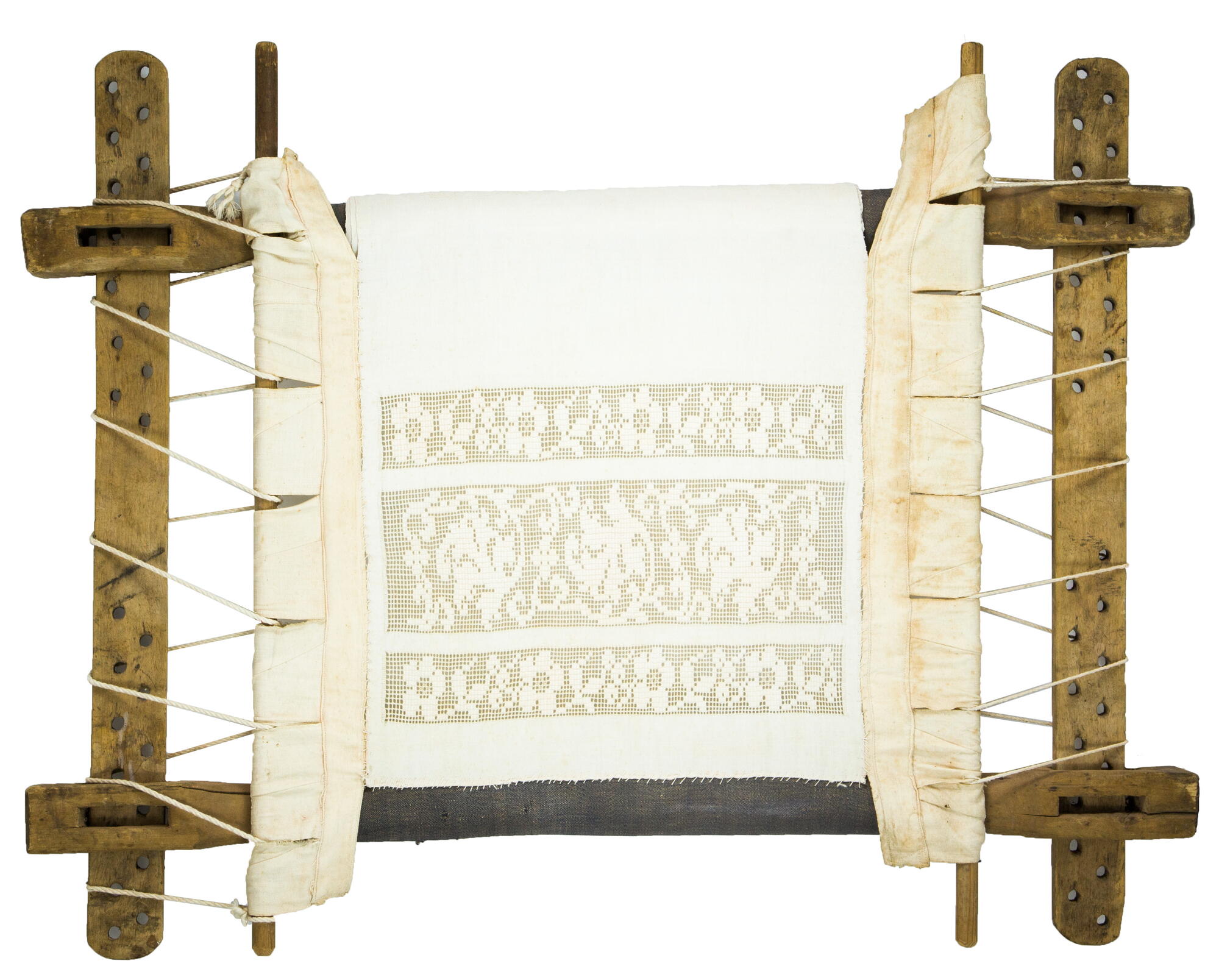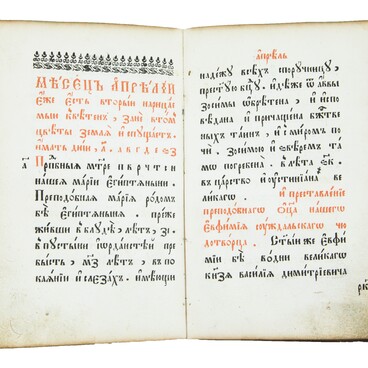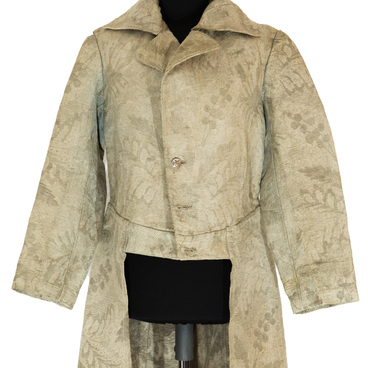Pyal’tsy for embroidery (embroidery frame)
The term “pyal’tsy” originated from the word “pyalo” (a pole, a board for stretching something, a distance piece) and it denotes “woman needlework workbench: a frame for stretching fabric to embroider on that fabric” (V. I. Dal’ dictionary).
First records about Russian embroidery referred to the Xth — the XIIth centuries. It was written in “Domostroy” that ”transparent” embroidery on linen was the work which required a lot of diligence and patience. Moreover, it developed a woman’s character. This needlework was called “pyalichnoe” work. Llittle girls studied “pyalichnoe diligence”. The girls who mastered several embroidery techniques were able to do “hitroruchnoe izryadstvo”. The women who knew all the secrets of embroidery art, mastered “shelkovidnoe uhischrenie”.
Some seams (for example, a cross) are convenient to do even without pyal’tsy. But pyal’tsy helped to stretch fabric and to do work at high artistic level.
Rectangular pyal’tsy were meant for embroidery of big size linen and wall panels that were sewn of separate pieces.
Stretching fabric on pyal’tsy is absolutely necessary for embroidery with spun gold. After stretching fabric on pyal’tsy cardboard is glued over the fabric. The embroidery with spun gold is fulfilled above the cardboard to make the embroidery three-dimensional. Gold-embroidery craftswoman worked in the cleanest chamber.
They had the most ordinary and the cheapest instruments and tools: a frame, an awl, scissors, a thimble, a needle. The frame consisted of four chamfered bars. Their diameter was 2,5 cm, their length was 55 cm (sometimes longer depending on the size of embroidery). The masters made the frames in the following way: firstly, they chose points located some centimeters from the edges of the bars. Then they tied the bars up tightly with ropes crosswise in those points. Open space of the frame had to be 46-48 cm.
Gold-embroidery craftswoman sat down on the chair or on the bench, put the frame on her knees, leaned the upper part of the frame against the table and embroidered.


